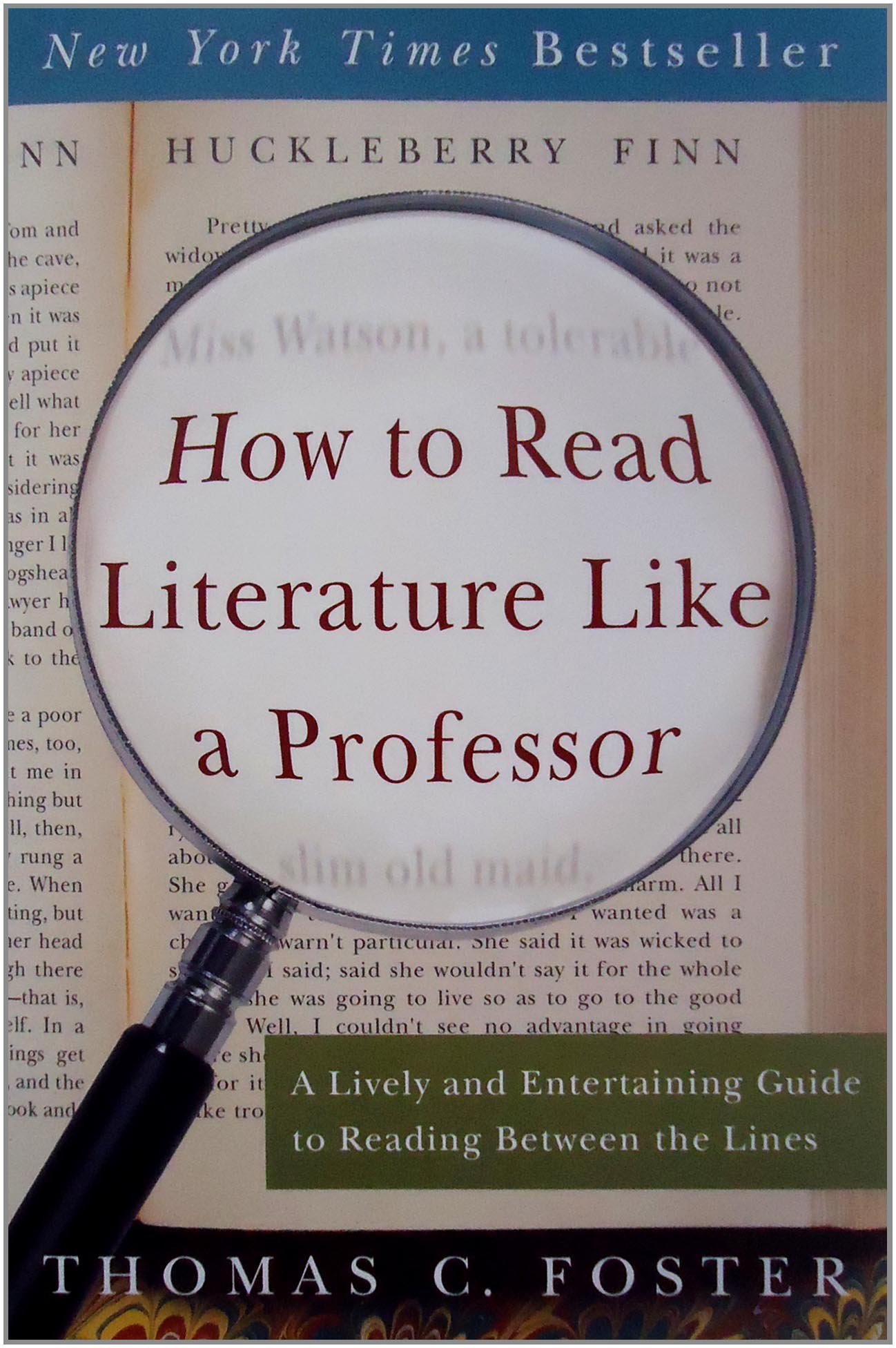How to Read Literature Like a Professor Summary
6 min read ⌚

MicroSummary: “How to Read Literature Like a Professor,” written by beloved American literary lecturer Thomas C. Foster, is the most popular book of its kind, aiming to teach you that there’s more in a novel than just the story and the characters, and that, in fiction, there’s no such thing as originality, or an ordinary flea, rose, or snowflake.
A Lively and Entertaining Guide to Reading Between the Lines
As we’ve told you before, the spine of Herman Melville’s “Moby-Dick” is a “get the whale” narrative. But, how is it that such a simple story is deemed one of the greatest novels in the history of literature?
Really, can “Moby-Dick” teach you how to live a better life?
Thomas C. Foster says that it can. Just like any other great book. That’s why he gives a “lively and entertaining guide” to reading between, behind, and above the lines.
So that you can learn how to read literature like a professor.
Who Should Read “How to Read Literature Like a Professor”? And Why?
In a world of constant distractions, we are mostly powering through life. And that includes reading as well. Not a good idea if you want to truly experience life. Or books, for that matter.
“How to Read Literature Like a Professor” strives to teach you how to change this. And, of course, this is something everybody should do. However – and naturally – literature students and young readers willing to acquire valuable interpretative tools will certainly be the ones to get the most of Foster’s useful book.
About Thomas C. Foster
 Thomas C. Foster is a professor of contemporary literature at the University of Michigan-Flint. A beloved and popular lecturer, he has turned many of his engaging classes and workshops into bestseller books.
Thomas C. Foster is a professor of contemporary literature at the University of Michigan-Flint. A beloved and popular lecturer, he has turned many of his engaging classes and workshops into bestseller books.
He is most famous for his “How to Read” series, which, in addition to this book, includes “How to Read Novels Like a Professor,” and “How to Read Poetry Like a Professor.”
“How to Read Literature Like a Professor Summary”
Let us paint you a picture:
You’re at a friend’s house, watching a movie with few of your best friends. Half an hour in the movie, one of your friends cries “Oh, that’s what the movie is about!” even though the scene is a discussion about mutant genes.
And even though all of you are trying to convince this weirdo that you were watching “X-Men 2” and not “Philadelphia” he’s insisting that “X2” is a movie about gay rights!
Well, guess what: he’s right!
And you know how he knew? Well, he was able to read more from the movie than you were! Which means: he knew more and he was paying more attention.
It’s the same with books: “Moby-Dick” can be a good, simple tale about a man who hates an animal, or one of the most complex symbolical works of art ever written!
Thomas C. Foster teaches you how to read books the second way. Or, to put it in more relatable terms: how to be that guy who got the gay reference in “X2” or figured out the twist in “The Sixth Sense” ten minutes into the movies! (Although, while we’re at it, Foster has written a book specifically about that as well).
And we already told you that your friend both knew more and was focused more than you. And that’s where literary analysis starts! It’s mostly about those two parts: memory and the power to notice. Usually, symbols, patterns, and literary devices.
First of all, you have to remember that, in literature, there’s no such thing as originality. Any creative person will tell you that. What literary critics are nowadays talking about is something opposite of uniqueness: Intertextuality.
It basically means that every book is a repository of many other books. And that you’re missing all the fun if you don’t know these other books! It’s basically like starting to watch a popular TV show from the 7th episode of the 9th season.
How many jokes would you get? And if you’re watching it a with a friend who has watched all the other episodes – who would enjoy the episode more.
In fact, here’s a quick quiz: what do “West Side Story,” “10 Things I Hate About You” and “The Lion King” have in common?
The answer might surprise you: Shakespeare! They are all modern adaptations of his plays.
If you haven’t noticed this before, read – but read them carefully – “Romeo and Juliet,” “The Taming of the Shrew,” and “Hamlet” once again. Then watch the movies. Trust us: you’ll find many new things that will tickle your fancy.
For example, you might start noticing some premonitions, foreshadowings, and symbols. Almost every great book is filled with them! Whether it’s something simple as autumn representing old age, or something much more sinister as a doppelganger representing death or identity dissociation – take notice! They are not there for no reason!
And sometimes, these symbols are even wonderfully subversive!
For example, writing about sex was frowned upon for most of human history.
Some writers, however, wanted to say something about it from time to time. And whether they were talking about worms and roses like Blake, or fleas like Donne – they did!
But, only the more perceptive knew!
Large-scale symbols are either allegories or formulaic patterns. Take, for example, the quest pattern. It’s the most common one. And it basically revolves around the notion that the goal of the journey is the journey itself.
Whether it’s “The Lord of the Rings” or “Monty Python and the Holy Grail,” locating the object of desire (a ring, a grail) is just an excuse for a series of adventures which turn heroes into cowards and ordinary men into heroes. And that’s what the story is about!
But, there’s a catch!
“Monty Python and the Holy Grail” and “Le Morte d’Arthur” are both tales about the same type of quest, just like “Don Quixote” and the knight novels. The difference is striking!
The reason:
Irony.
It’s the ultimate tool in the writer’s arsenal. It takes years to understand it. After all, it’s what can turn Homer’s “Odyssey” into a one-day Dublin narrative.
Yes, we’re talking about your least favorite book ever.
Here’s your chance to start appreciating it.
Key Lessons from “How to Read Literature Like a Professor PDF”
1. Reading Starts with Your Memory Skills
2. Be Careful Not to Miss Any Symbols or Patterns
3. That’s It: You’ve Mastered Reading
Reading Starts with Your Memory Skills
Vladimir Nabokov, the writer of “Lolita,” once quipped that every good reader has to have a good “imagination, memory, a dictionary, and some artistic sense.”
Memory might seem like the odd one out in the list, but, in fact, it may be the most important one. Because, no book is original – each and every one of them is intertextual. That is, in every book there are at least few other books.
And you need to remember them to understand it better.
Be Careful Not to Miss Any Symbols or Patterns
Symbols and patterns are much more important than stories and characters. They are the ones which give depth and relevance. And, in more cases than one, they are fun! Because, authors are known to use them to plant Easter eggs inside their stories. Aimed especially at censors.
That’s It: You’ve Mastered Reading
No, that’s not it. The title is ironical. Which is something great authors use constantly to undermine the stories and check if you’re following. Once you are able to read Joyce’s “Ulysses” – a profoundly ironical novel – then you can say that you’ve mastered reading.
So, see you in a few years!
Like this summary? We’d Like to invite you to download our free 12 min app, for more amazing summaries and audiobooks.
“How to Read Literature Like a Professor” Quotes
Education is mostly about institutions and getting tickets stamped; learning is what we do for ourselves. When we're lucky, they go together. If I had to choose, I'd take learning. Share on X ‘Always’ and ‘never’ are not words that have much meaning in literary study. For one thing, as soon as something seems to always be true, some wise guy will come along and write something to prove that it's not. Share on X Reading... is a full-contact sport; we crash up against the wave of words with all of our intellectual, imaginative, and emotional resources. Share on X Reading is an activity of the imagination, and the imagination in question is not the writer's alone. Share on X Everything is a symbol of something, it seems, until proven otherwise. Share on XOur Critical Review
“How to Read Literature Like a Professor” doesn’t merely explain how books convey meaning, and how one can unearth it. It also elucidates many techniques which you can use as a valuable tool to avoid misunderstandings in everyday life.
After all, whether it’s a novel or the mistakes of your partner, you’re interpreting language, nevertheless!
This, in itself, would be enough to recommend Foster’s book. However, we liked the book enough to offer you few more: it’s nicely structured, engagingly written, and really funny.
Not to mention – full of interesting bits about your favorite books!
Emir is the Head of Marketing at 12min. In his spare time, he loves to meditate and play soccer.







